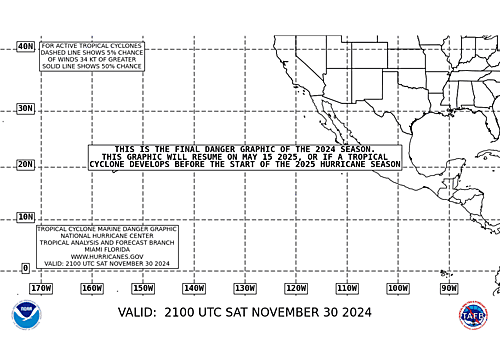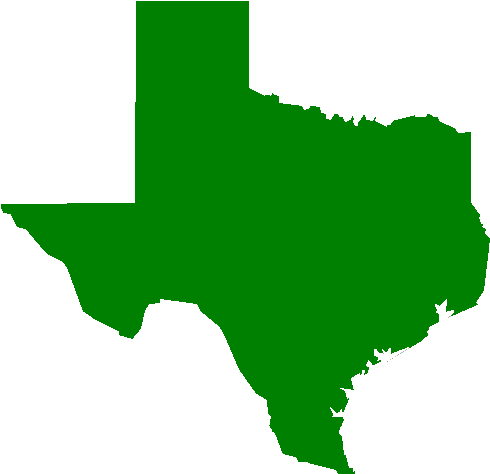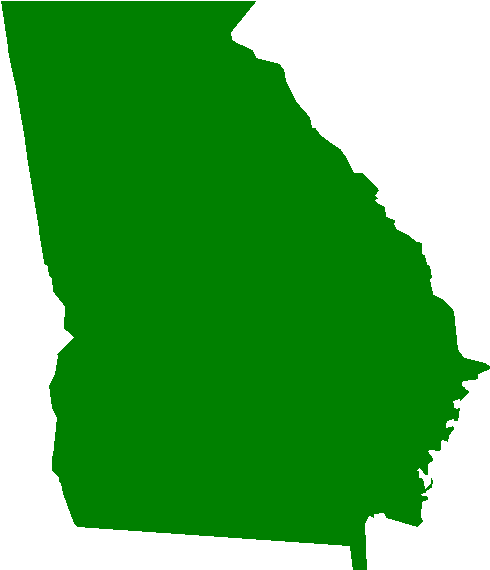Developments in the eastern Pacific

A single source reference on tropical weather predictions. With a traditional focus on the upper Texas and Louisiana Gulf Coast we've maintained links to track all Atlantic Basin, Caribbean and eastern Pacific storm systems. We are now expanding our view to tropical storms throughout the world intending to be a comprehensive global storm tracking resource.



 UPDATE: AccuWeather is reporting that Fengshen has made landfall just east of Hong Kong. Hong King International Airport is reporting heavy rain with winds of 30 MPH.
UPDATE: AccuWeather is reporting that Fengshen has made landfall just east of Hong Kong. Hong King International Airport is reporting heavy rain with winds of 30 MPH. Yesterday, reports indicated that between 17 and 20 people had been killed by Typhoon Fengshen. Reports have steadily shown wind speeds as high as 100 MPH (160 kph) which would make Fengshen a solid Category 2 storm by US measuring standards using the Saffir Simpson Scale.
Yesterday, reports indicated that between 17 and 20 people had been killed by Typhoon Fengshen. Reports have steadily shown wind speeds as high as 100 MPH (160 kph) which would make Fengshen a solid Category 2 storm by US measuring standards using the Saffir Simpson Scale. 
Current estimates by the International Red Cross may be severely understated asSee this news report from Al Jazeera (English) showing the flooding.
more than 700 ferry passengers are feared to have been lost in the typhoon-stricken Philippines. Hopes have begun to fade as only 4 survivors have been discovered.On Saturday, the Philippines became the next victim in what is predicted to be an above average Pacific typhoon (hurricane) season.
Initial observations by regional watch stations predicted that the category 1—with wind gusts of cat. 2 (150 km)—typhoon Fengshen (God of Wind) would cause little damage.
 can be seen on the map here as a small island in the central part of the country.
can be seen on the map here as a small island in the central part of the country.At 2:00 p.m. today, Typhoon "FRANK" was located by radar, satellite and surface data at 100 kms South of Baguio City (15.4°N 120.5°E) with maximum sustained winds of 120 kph and gustiness of up to 150 kph. It is forecast to move north
northwest at 15 kph.
 border with Louisiana just over 20 years ago. I went from a suburb in central NJ to small town USA in a place with bayous, alligators and wide open spaces. Within a few months of arriving, Hurricane Gilbert headed our way and there was talk of evacuation and flooding. I even boarded up the windows in my apartment. Over time the place became home.
border with Louisiana just over 20 years ago. I went from a suburb in central NJ to small town USA in a place with bayous, alligators and wide open spaces. Within a few months of arriving, Hurricane Gilbert headed our way and there was talk of evacuation and flooding. I even boarded up the windows in my apartment. Over time the place became home.

 Hopefully, you all have noticed that we are taking on more of a worldwide view to tropical weather. This weekend we have been watching the path of Typhoon Fengshen (known locally in the Philippines as Typhoon Frank). A tropical wave has been strengthening in the eastern Pacific that looks favorable for further development.
Hopefully, you all have noticed that we are taking on more of a worldwide view to tropical weather. This weekend we have been watching the path of Typhoon Fengshen (known locally in the Philippines as Typhoon Frank). A tropical wave has been strengthening in the eastern Pacific that looks favorable for further development.
 From AccuWeather.com
From AccuWeather.comEarly Friday morning EDT, Typhoon Fengshen made landfall over the island of
Samar in the eastern Philippines. Maximum sustained winds were 80
mph, the equivalent of a Category 1 hurricane in the Atlantic or Eastern Pacific
basins.
MANILA (AFP) — Typhoon Fengshen smashed into the Philippines' third largest island Friday packing winds of 140 kilometres (87 miles) an hour as residents
braced for flooding, landslides and big waves.There were no immediate reports of casualties or damage as the storm scythed northwest across Samar, an impoverished island of 1.5 million people.
Its eye was 60 kilometres away from the island's main city Calbayog at 4:00 pm (0800 GMT), the weather office here said.
--snip--
Fengshen was expected to hit the Bicol peninsula on Luzon's southeastern tip on Saturday, and could then hit the Luzon heartland on Sunday, the weather bureau said in an updated forecast.Arroyo has ordered that warnings be issued to all provinces along the typhoon's expected path, and for local governments to prepare for contingencies, senior aide Anthony Golez said in a statement.
The armed forces were also on "alert in order to support evacuation activities of local government units if needed," Golez said, while the social welfare department was beefing up its relief stockpiles.
The weather bureau, which upgraded Fengshen from a tropical storm on Friday, warned residents of low-lying areas and upland communities to take precautions against flash floods and landslides.
The bureau also said coastal communities could be hit by big waves.
Heavy rains brought by the storm have caused some flooding in parts of the country, but no casualties or damage have been reported.
Hundreds of people die in the Philippines every year due to floods and landslides caused by tropical storms or typhoons that sweep in mainly from the Pacific.
 The current track is expected to take the storm away from the Phillipines but it may affect Japan sometime next week. (AccuWeather.com)
The current track is expected to take the storm away from the Phillipines but it may affect Japan sometime next week. (AccuWeather.com)BATON ROUGE, La. — Despite a massive effort to repair and upgrade flood defenses
since Hurricane Katrina, storm surge could pour over levees in New Orleans if a
strong Category 2 or higher hurricane strikes the city, the National Oceanic and
Atmospheric Administration said Monday.
While the forecast uses what
officials say is themost accurate and complete picture yet of the region's levee
heights, they said they weren't surprised by findings that reaffirm the area
surrounding New Orleans is among the nation's most hurricane-vulnerable.
On Monday, the corps was unable to provide a breakdown on how much has been spent so far on work to repel storm surge. Since Katrina, Congress has given the corps about $7.1 billion to work with and it is considering giving the corps $5.7 billion
more."We have a long way to go," said Randy Cephus, a corps spokesman in New Orleans. "There still remains risk and even once the system is complete, there will always be risk." Before Katrina hit nearly three years ago, levee heights were woefully out-of-date and in many places far lower than officials thought they were, Dokka said.
But, unfortunately, the new measurements, incorporating post-Katrina levee upgrades, confirm an old story: the region remains at risk. "In general, the pattern hasn't changed remarkably," said Stephen Baig, a storm surge expert with NOAA's National Hurricane Center.
"Somewhere between a Category 2 and Category 3 overtopping occurs."
The NOAA storm surge estimates do not take into consideration possible engineering failures, like the levee breaches that caused most of the misery in New Orleans
during Katrina, which was a category 3 upon landfall south of New Orleans.State officials were not surprised by the latest findings. "All
of coastal Louisiana is vulnerable and will continue to be vulnerable," said
Jerome Zeringue, a top levee aide to Gov. Bobby Jindal.

 hide from the wind." If you live in a storm surge area, you must evacuate at the appropriate time. In the Houston Galveston region, the evacuation order is set up by ZIP codes with those closest to the coast leaving first. It is like unloading an airplane from the back to the front once it lands. It requires some patience, a plan and a cool head.
hide from the wind." If you live in a storm surge area, you must evacuate at the appropriate time. In the Houston Galveston region, the evacuation order is set up by ZIP codes with those closest to the coast leaving first. It is like unloading an airplane from the back to the front once it lands. It requires some patience, a plan and a cool head.The 2-1-1 Texas United Way Helpline is the only way for people who can’t transport themselves to get a free ticket out of town in an evacuation.
“It’s important to call before the storm so officials can get the correct numbers,” helpline Director David Jobe said last week at a town hall meeting sponsored by Houston District E Councilman Mike Sullivan.
Residents do not need to be bed-ridden or have a debilitating illness to qualify for the service, Jobe said.
Those who have cars in poor condition and even those who just can’t afford fuel for the trip are eligible for assistance.
Anyone who needs this assistance has to register each year so that the officials can have to correct amount of resources available to accommodate everyone. Waiting until a storm is approaching or after you are stuck on your roof is too late.
...officials said that with registration numbers falling each year with the fading memory of Hurricane Katrina, they can’t stress enough the importance of registering for transportation assistance as early as possible.
At 72 hours before a storm, any evacuation assistance must be provided by emergency response officials, Jobe said. And, once that wind hits 55 miles per hour, residents are on their own until the hurricane blows through.
To register with 2-1-1 online, visit www.hcoem.org, and click on the “About 2-1-1” link on the right.
 Source: USA Today
Source: USA TodayLast year, the number of named storms actually reached the predicted number for the season but the number of hurricanes were below that predicted. The season seemed mild because none of those storms came ashore in the US. El Nino conditions generally kept the storm intensity low and high pressure kept the storms out to sea. 2006 was even more obvious with nearly every storm being pushed into the center of the North Atlantic before dying out.The Atlantic remains in an extended period of active hurricane seasons that began in 1995, Gerry Bell, lead seasonal hurricane forecaster at the Climate Prediction Center of the National Oceanic and Atmospheric Administration (NOAA), said Thursday.
"People should remember that the 2003-05 seasons saw a total of 31 Atlantic hurricanes," he said. "Although we've had a break the past two years, there's no reason to think that break will continue."
NOAA forecasters predict a 60%-70% likelihood of 12-16 storms strong enough to be named, meaning sustained winds of at least 39 mph. They expect six to nine to develop into hurricanes — storms with winds reaching 74 mph. Of those, the forecast says, two to five are likely to be classified as major, with winds of 111 mph or higher.
Since 1950, an average Atlantic hurricane season has 11 named storms, six of them hurricanes.
The ingredients for a hurricane include a pre-existing weather disturbance, warm tropical oceans, moisture, and relatively light winds aloft. If the right conditions persist long enough, they can combine to produce the violent winds, incredible waves, torrential rains, and floods we associate with this phenomenon.
Each year, an average of eleven tropical storms develop over the Atlantic Ocean, Caribbean Sea, and Gulf of Mexico. Many of these remain over the ocean and never impact the U.S. coastline. Six of these storms become hurricanes each year. In an average 3-year period, roughly five hurricanes strike the US coastline, killing approximately 50 to 100 people anywhere from Texas to Maine. Of these, two are typically "major" or "intense" hurricanes (a category 3 or higher storm on the Saffir-Simpson Hurricane Scale).
Storm surge is simply water that is pushed toward the shore by the force of the winds swirling around the storm. This advancing surge combines with the normal tides to create the hurricane storm tide, which can increase the mean water level 15 feet or more. In addition, wind driven waves are superimposed on the storm tide. This rise in water level can cause severe flooding in coastal areas, particularly when the storm tide coincides with the normal high tides. Because much of the United States' densely populated Atlantic and Gulf Coast coastlines lie less than 10 feet above mean sea level, the danger from storm tides is tremendous.Storm surge is the most dangerous effect of tropical storms. After Hurricane Rita showed the hazards of evacuating too many people from a given area (3 million left when only 1.2 live in the flood plain), the Texas Emergency Management adopted the plan, "Run from the water, Hide from the wind." Quite simply put, you can hunker down as long as you are on high ground but you cannot hide from the rising waters unless you leave.
Tornado Facts
When associated with hurricanes, tornadoes are not usually accompanied by hail or a lot of lightning, clues that citizens in other parts of the country watch for.
Tornado production can occur for days after landfall when the tropical cyclone remnants maintain an identifiable low pressure circulation.
They can also develop at any time of the day or night during landfall. However, by 12 hours after landfall, tornadoes tend to occur mainly during daytime hours.



